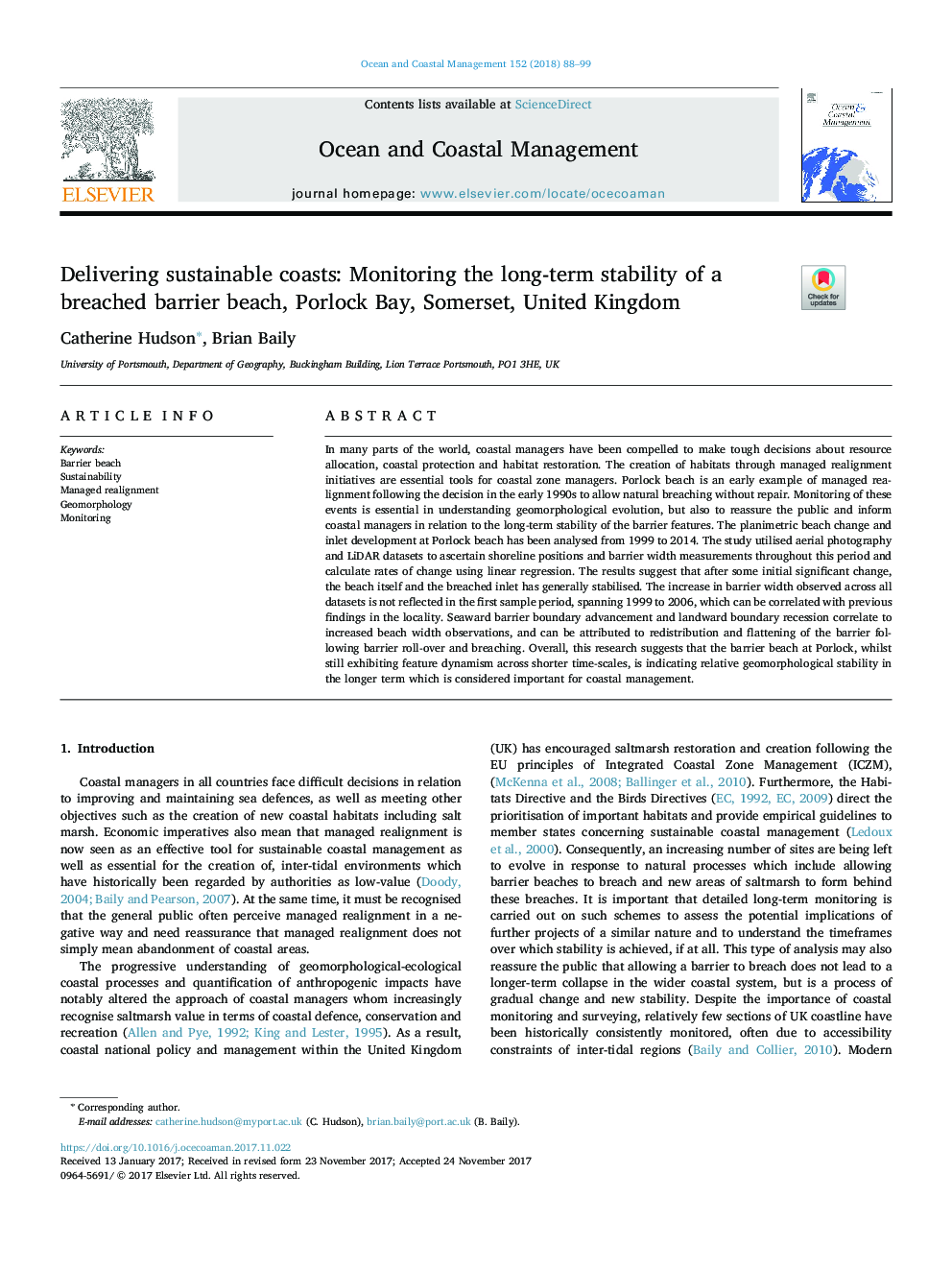| Article ID | Journal | Published Year | Pages | File Type |
|---|---|---|---|---|
| 8060897 | Ocean & Coastal Management | 2018 | 12 Pages |
Abstract
In many parts of the world, coastal managers have been compelled to make tough decisions about resource allocation, coastal protection and habitat restoration. The creation of habitats through managed realignment initiatives are essential tools for coastal zone managers. Porlock beach is an early example of managed realignment following the decision in the early 1990s to allow natural breaching without repair. Monitoring of these events is essential in understanding geomorphological evolution, but also to reassure the public and inform coastal managers in relation to the long-term stability of the barrier features. The planimetric beach change and inlet development at Porlock beach has been analysed from 1999 to 2014. The study utilised aerial photography and LiDAR datasets to ascertain shoreline positions and barrier width measurements throughout this period and calculate rates of change using linear regression. The results suggest that after some initial significant change, the beach itself and the breached inlet has generally stabilised. The increase in barrier width observed across all datasets is not reflected in the first sample period, spanning 1999 to 2006, which can be correlated with previous findings in the locality. Seaward barrier boundary advancement and landward boundary recession correlate to increased beach width observations, and can be attributed to redistribution and flattening of the barrier following barrier roll-over and breaching. Overall, this research suggests that the barrier beach at Porlock, whilst still exhibiting feature dynamism across shorter time-scales, is indicating relative geomorphological stability in the longer term which is considered important for coastal management.
Related Topics
Physical Sciences and Engineering
Earth and Planetary Sciences
Oceanography
Authors
Catherine Hudson, Brian Baily,
